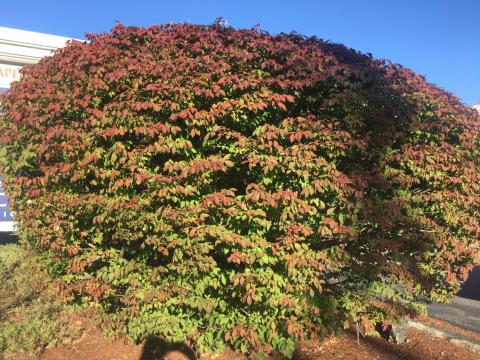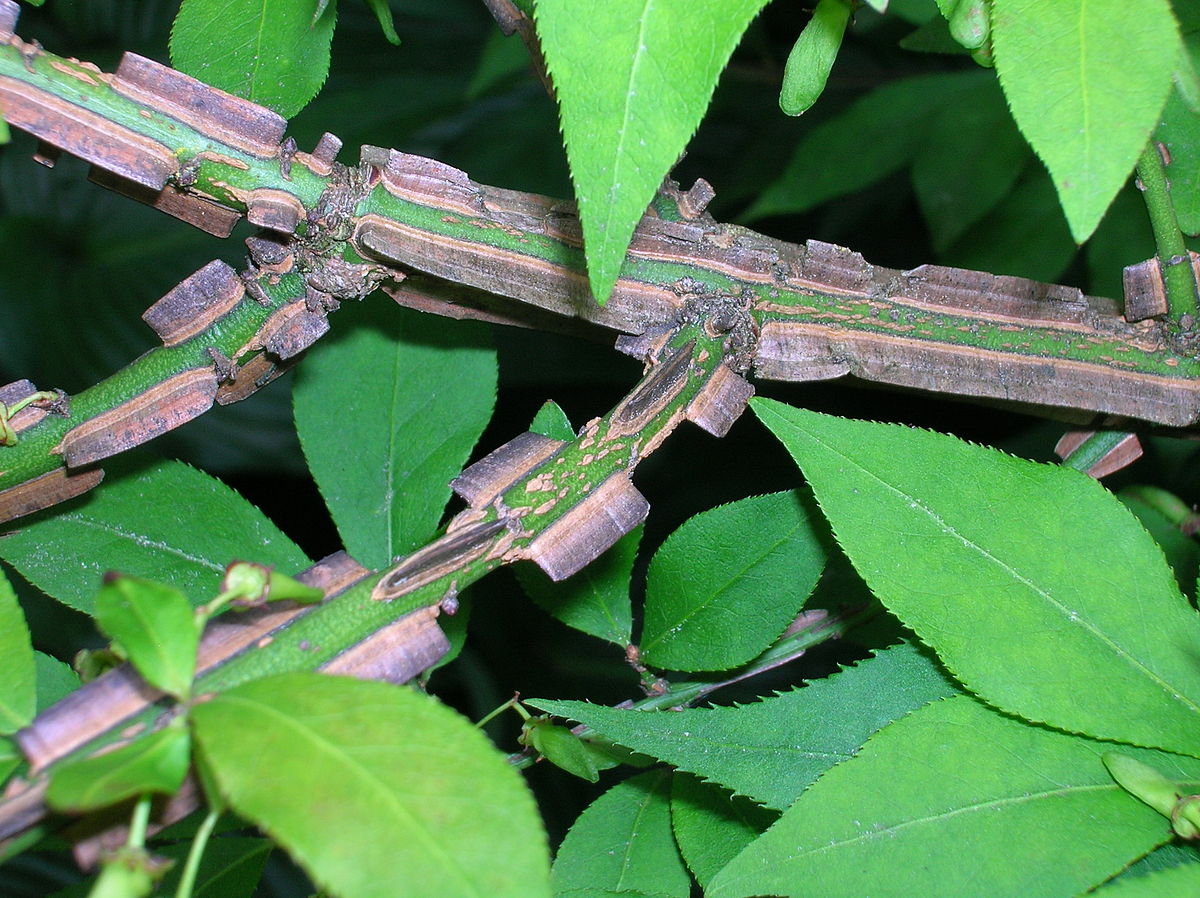Invasive in the Spotlight: Burning Bush

Burning bush (Euonymus alatus) is a deciduous shrub native to Asia that has become well established in New Hampshire as well as throughout parts of the east coast and the midwest. Burning bush can reach 20 feet in both height and width, identified with simple, light green leaves oppositely arranged. Burning bush is found in zones 3 to 8, prefering dry upland soils with full sun to heavy shade. Burning bush is on the list of prohibited species in New Hampshire.
To identify burning bush without its leaves, it is a multi-stemmed shrub with dense branching. The bark of older stems is gray or brownish gray with small fissures/furrows - the bark may appear ridged. Younger stems are green having lateral tan corky wing appendages.

Burning bush is known to outcompete and displace native species. Its seeds are dispersed by birds and other wildlife, which is how it spreads.
Control
Hand remove seedlings and saplings. Use a spade or shovel to dig out larger plants. Large populations may be controlled with herbicide use. Integrated Pest Management (IPM) is advised.
Alternative Plants For Your Landscape
- Highbush cranberry (Viburnum trilobum)
- Highbush blueberry (Vaccinium corymbosum)
- Fothergilla (Fothergilla gardenii or Fothergilla major)
- Redvein enkianthus (Enkianthus campanulatus)
- Red chokeberry (Aronia arbutifolia)
Learn more about alternative plants for your landscape.
Sources:
Burning Bush Fact Sheet, NH Department of Agriculture
New Hampshire Guide to Upland Invasive Species, 2001, Cygan, David
Related Resource(s)
